Abstract
In clinical pharmacological studies, where it is not possible to describe the full dose-response curve, the construction of dose-response relationships ideally depends upon achieving a reproducible and readily measurable response for each dose administered. This study investigates in normotensive males the technique of dose-response analysis for the blood pressure and heart rate increases with constant infusions of incremental doses of vasoactive drugs, particularly catecholamines. Steady state responses could be adequately obtained using 5 min infusion periods (at each dose level) for noradrenaline and alpha-methyl noradrenaline. At least 7 min was required for phenylephrine and 8 min for isoprenaline. There was an approximate correlation between the time to achieve the steady state response and the half-life of the offset of the agonist effect. For interindividual comparisons it is desirable to compare steady state responses and so the time at each dose level will vary according to which agonist is being used. For intraindividual comparisons it may not be essential that steady state responses are achieved. For example, assessment of the effect of prazosin on the responses to phenylephrine, by calculation of dose ratios, indicated that 5 min dose intervals were adequate.
Full text
PDF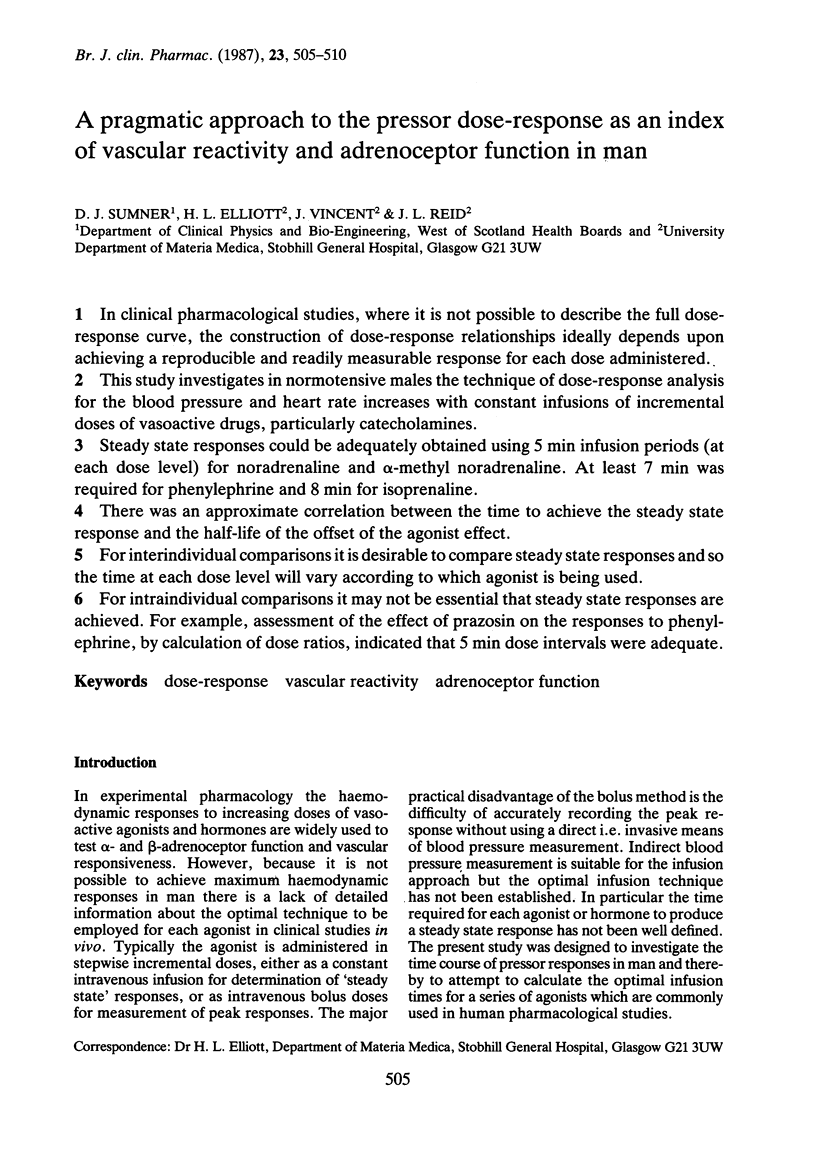
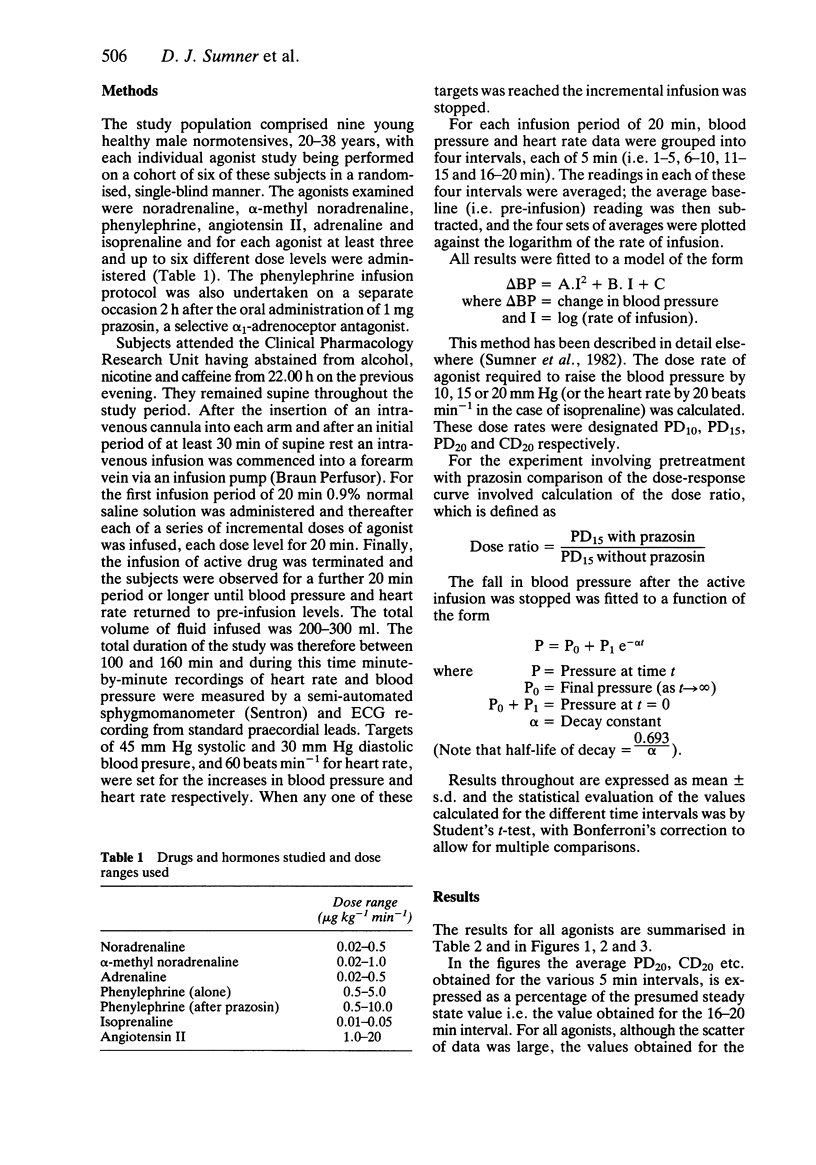
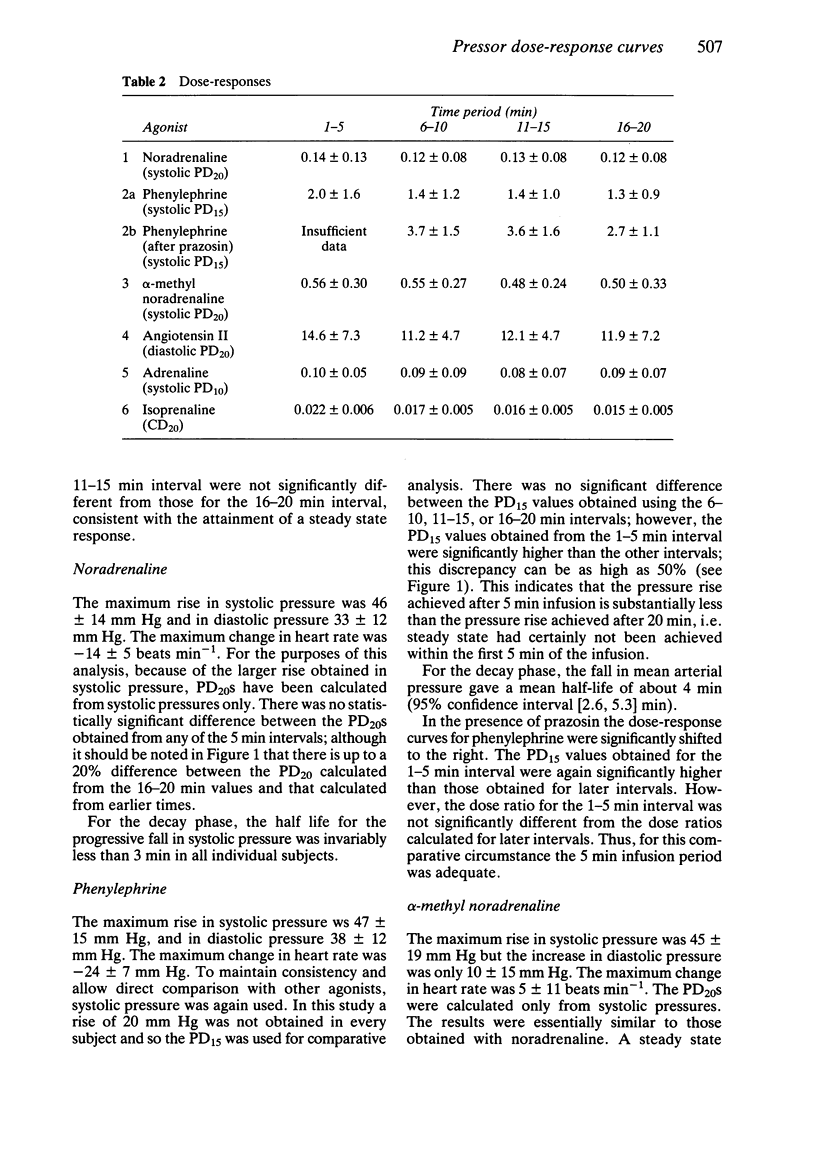
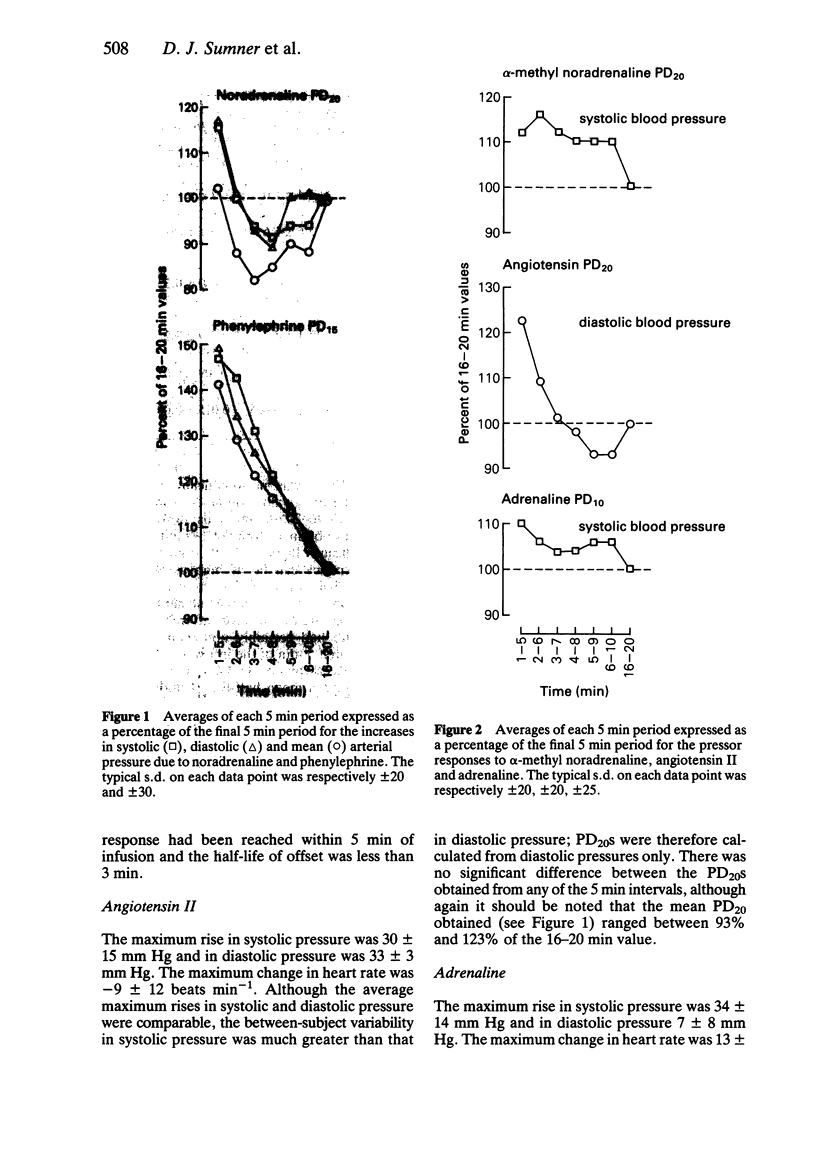
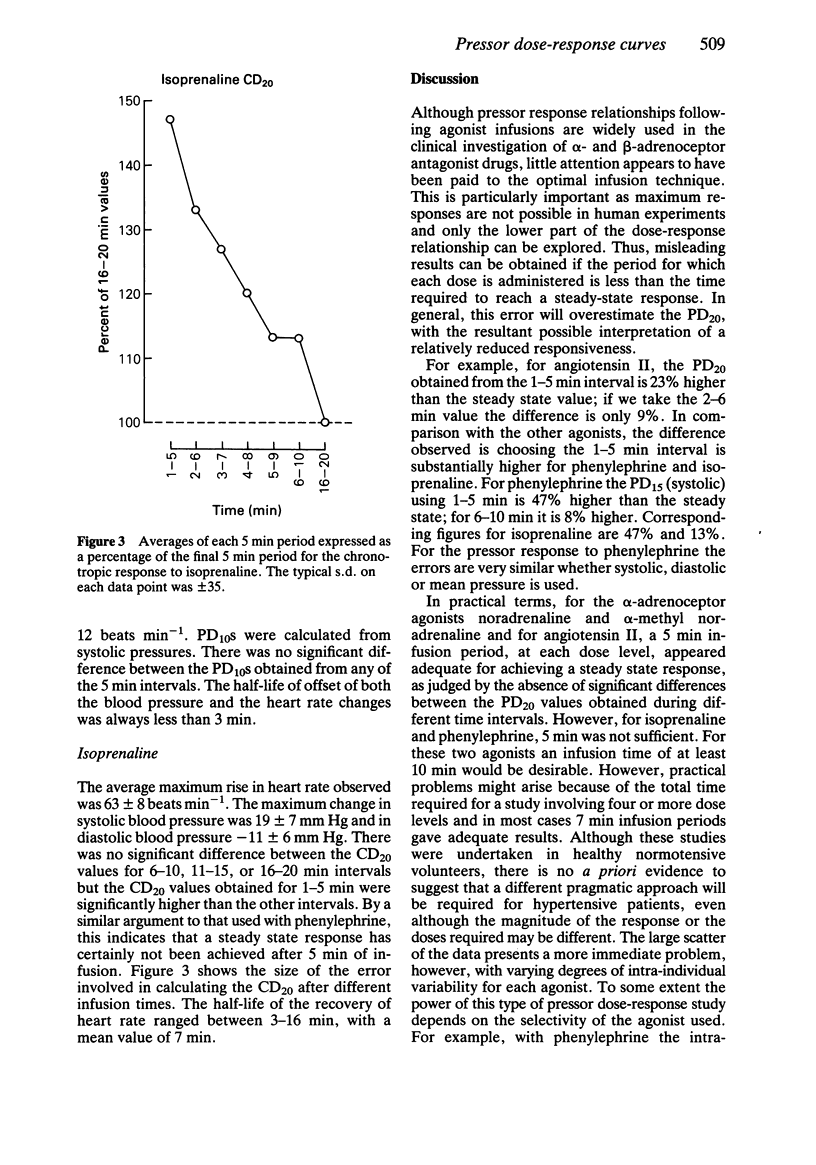
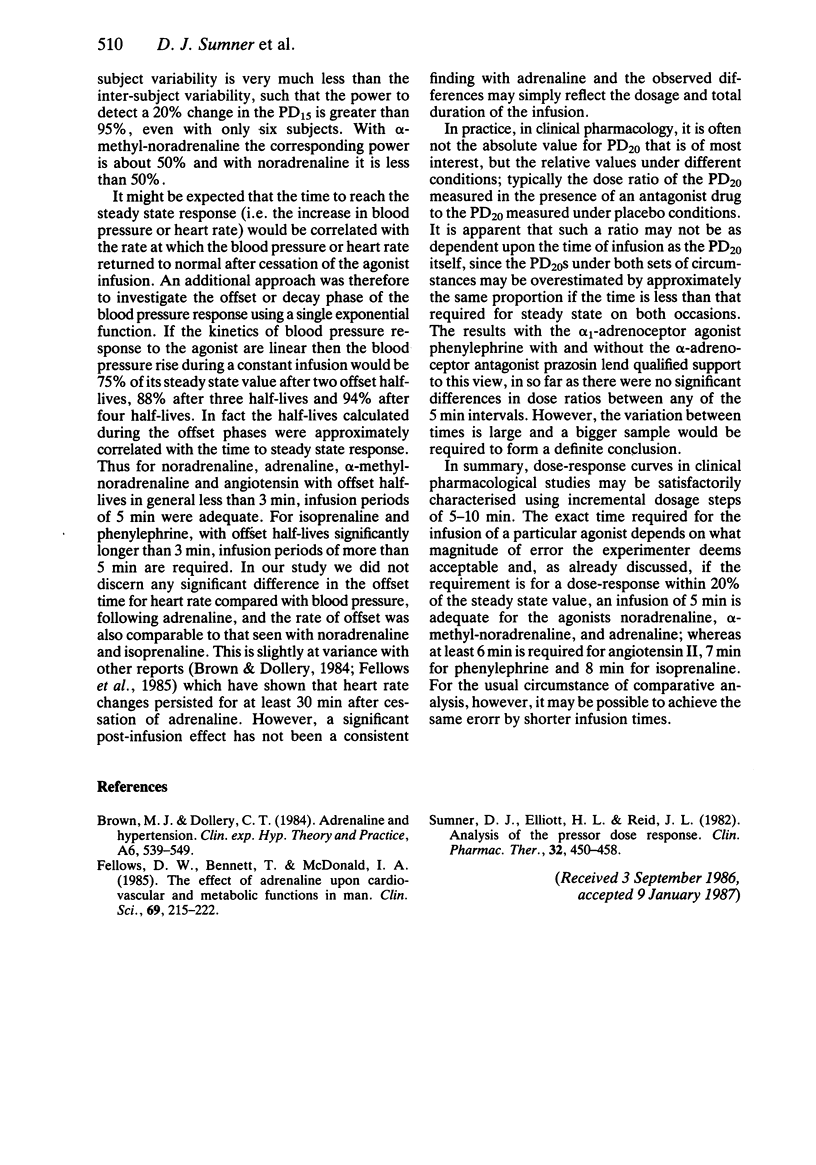
Selected References
These references are in PubMed. This may not be the complete list of references from this article.
- Brown M. J., Dollery C. T. Adrenaline and hypertension. Clin Exp Hypertens A. 1984;6(1-2):539–549. doi: 10.3109/10641968409062582. [DOI] [PubMed] [Google Scholar]
- Fellows I. W., Bennett T., MacDonald I. A. The effect of adrenaline upon cardiovascular and metabolic functions in man. Clin Sci (Lond) 1985 Aug;69(2):215–222. doi: 10.1042/cs0690215. [DOI] [PubMed] [Google Scholar]
- Sumner D. J., Elliott H. L., Reid J. L. Analysis of the pressor dose response. Clin Pharmacol Ther. 1982 Oct;32(4):450–458. doi: 10.1038/clpt.1982.188. [DOI] [PubMed] [Google Scholar]


